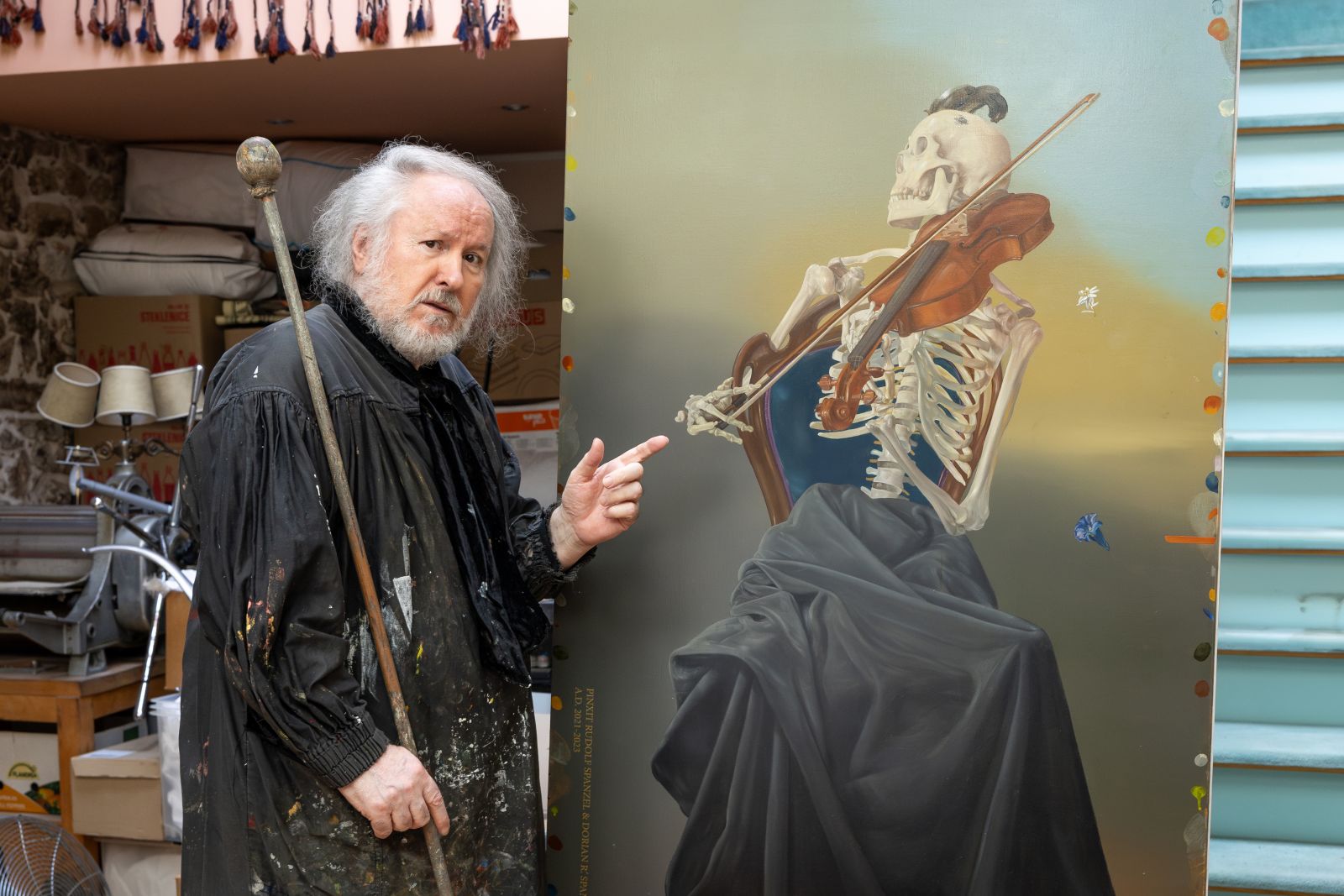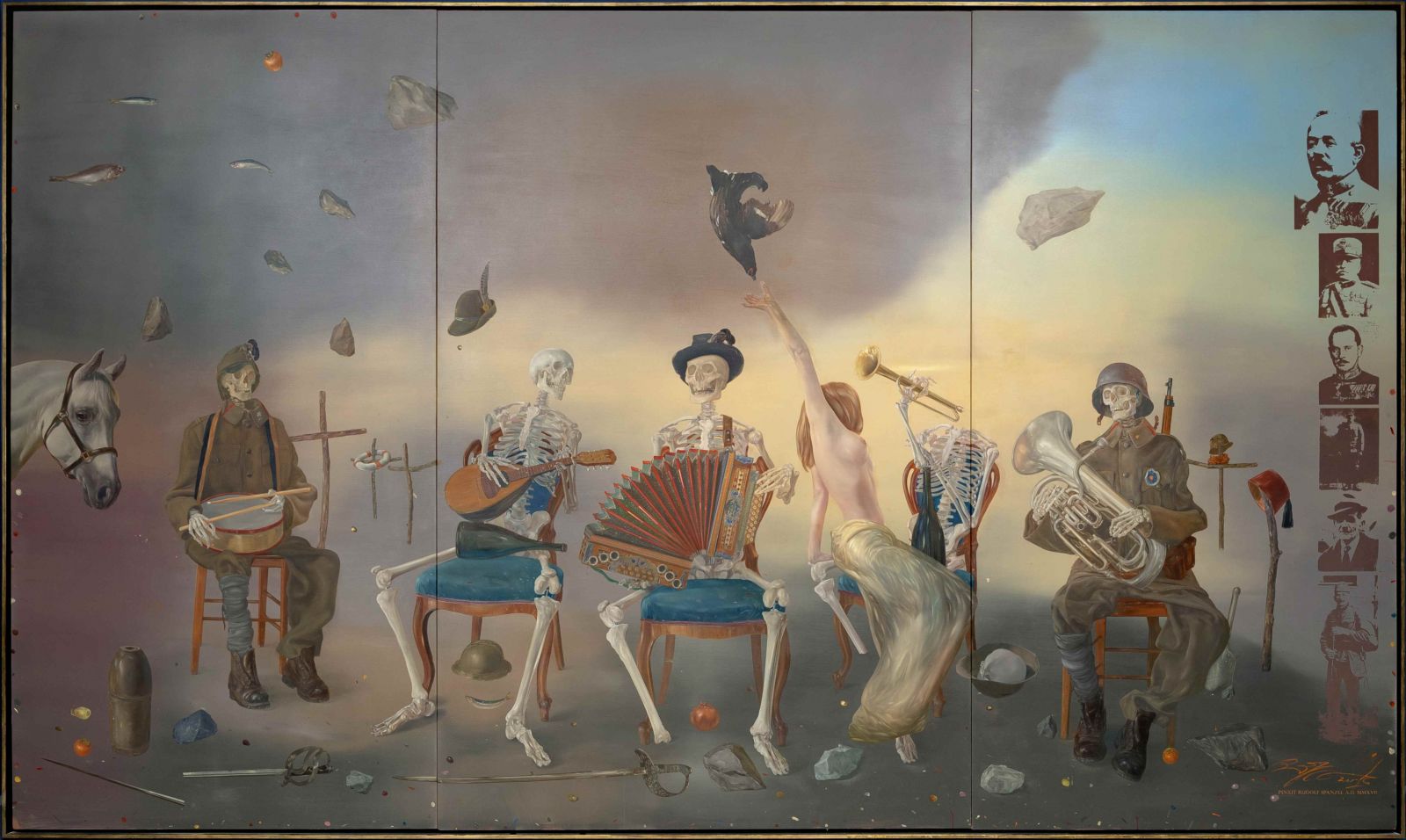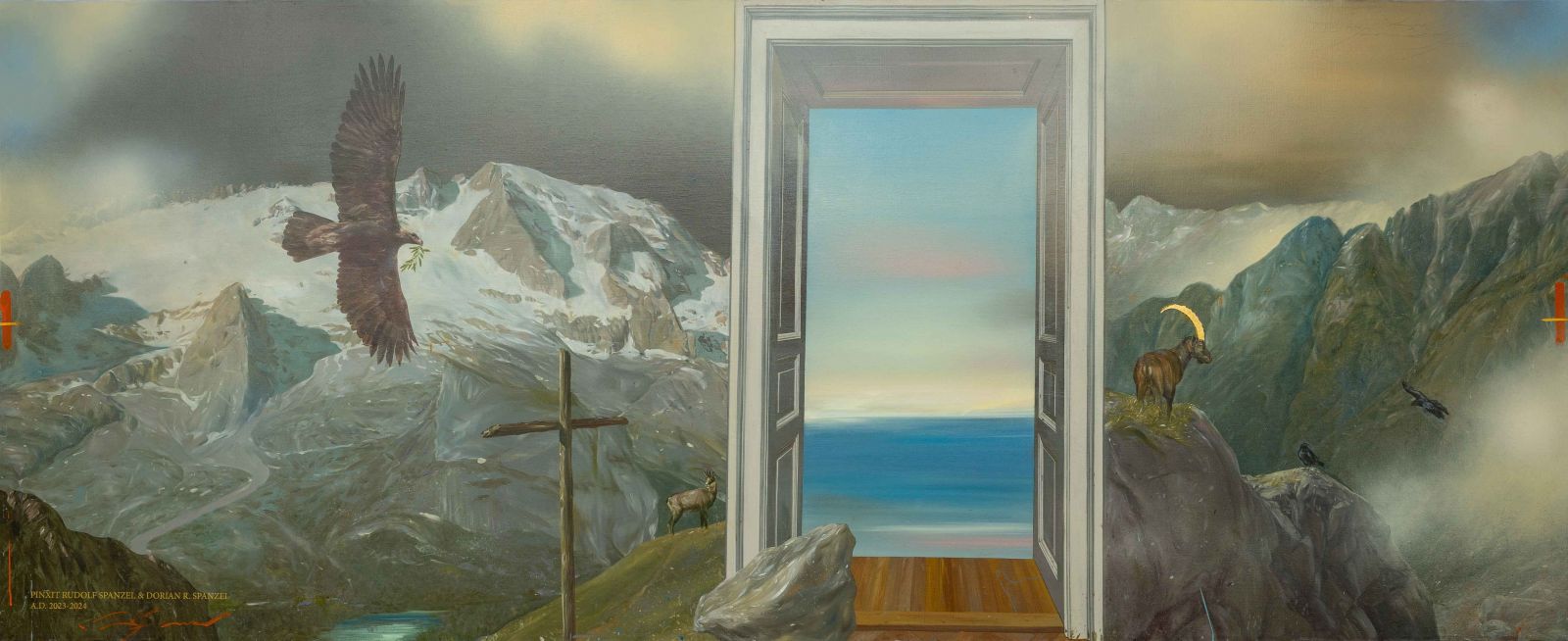
Art opus Amen set in stone

The artistic narrative Amen čez kamen (Amen set in stone) by Rudi Španzel consists of five unique canvases, including the 5x3 meter triptych Dance of Life and Death, which has been dubbed by art critics as the Slovenian Guernica. It is undoubtedly one of the most vivid depictions of the tragedy of the Isonzo Front in the world.
The phrase Amen čez kamen, which serves as the title of the collected works, was taken by the artist from his childhood in the Savinja Valley. There, it functioned as a binding phrase among children—something that was agreed upon and held as an unbreakable truth. As the title of this painting composition, it carries multiple layers of meaning. The most general and direct one reflects the artist's current belief that this work represents his farewell to depicting the stony landscapes marked by the horrors of the Isonzo Front. With this, painter Španzel bids farewell to seven years of dedication to this theme. Now finally completed, these magnificent canvases tell their stories in the monumental watchtower of Slovenian identity at Cerje—like amen čez kamen!
What is seen in these paintings is not a direct depiction of war events—no battles, no cannon fire, no mustard gas, no assaults, no rugged, exhausted, terrified faces of men in the trenches. All the canvases illustrate the consequences of the carnage.
In the first painting, Dance of Life and Death, people are depicted as already long dead. Fleshless, bloodless skeletons play musical instruments, performing a hopelessly lifeless melody while gazing despairingly at the apparition of a woman—an idol of the future that they will never reach or experience again.
The second piece, Wind of Oblivion, no longer contains even skeletons to testify to the cruel wartime. Here, the wind of oblivion carries away only objects that serve as reminders of the horrors that took place— a general’s rock, weapons, military gear, and other characteristic artifacts. These items scream from the canvas, urging that those times must never be forgotten.
The third composition, Amen čez kamen, no longer contains any objects reminiscent of war. It portrays only the mountainous, rocky landscape where the tragedy of unimaginable proportions unfolded. Barren, snow-covered peaks, misty valleys, the distant Triglav mountain range, the characteristic greenish shimmer of the Soča River at the foothills—all sparsely inhabited by the usual fauna. An eagle flies with outstretched wings, yet it curiously carries an olive branch in its beak. Is the eagle a harbinger of peace?
This large canvas thus depicts an unredeemed world with doors wide open to something brighter. Across the cloudy ridges and shadowed ravines, one can still sense the unfulfilled souls of fallen men, robbed of life, while at the same time, the view opens toward something gentler—perhaps a promise of a better life.
About the Academic Painter Rudolf Španzel
Rudolf Španzel was born on December 18 in Celje and hails from the mining village of Zabukovica. He completed his primary education in Griže near Žalec and continued his studies at the Secondary School for Design in Ljubljana. After graduating, he was accepted into the Academy of Fine Arts in Ljubljana, where he completed his studies under Professor Maksim Sedej. He continued his education in the painting specialization program under Professors Zoran Didk, Gabrijel Stupica, and Janez Bernik, as well as in the graphic specialization program under Professors Riko Debenjak and Marjan Pogačnik. He lives in Ljubljana and works as a freelance artist.
Some of his most significant works include paintings at Brdo pri Kranju, in the Banka Celje, in the Cultural Center of Žalec, the stained-glass window in the WTC Palace, 13 stained-glass windows in the Church of St. Pancras in Griže, and many others.
Among his latest works is the completed artistic narrative on the Isonzo Front, Amen čez kamen, consisting of five magnificent canvases displayed in the Monument of Peace at Cerje. This monument serves as a carefully curated museum space that preserves the memory of all those who contributed to peace in this part of the world and carries forward the responsibility of nurturing the most fragile value of modern society—peace—to future generations.








